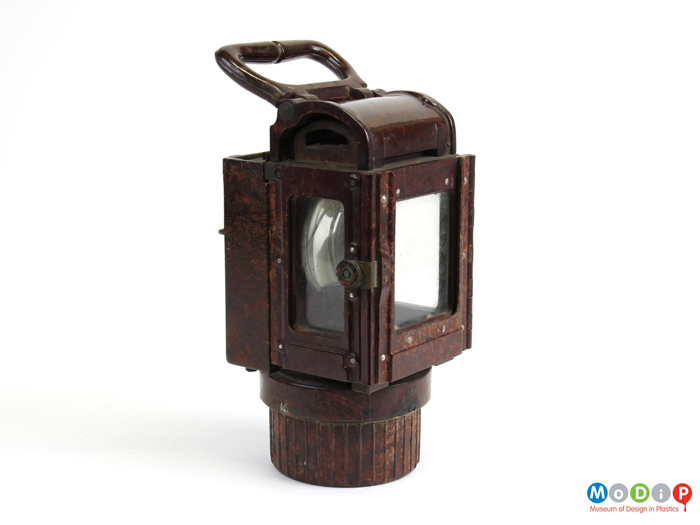Military lamp
Selected as an interesting German military piece but who used it?

Case number - PHSL : 182
A 1930s or 1940s portable lantern powered by acetylene and apparently for military use. It is made of compression moulded rag filled phenol formaldehyde and has metal attachments and glass windows.
View more images on the MoDiP site
View more images on the MoDiP site
| Designer | Unknown - Wanted |
| Manufacturer | Unknown - Wanted |
| Country | Germany |
| Date | 1939 (circa) |
| Dimensions | height 225 mm, width 100 mm, depth 110 mm |
| Materials | plastic, bakelite - generic term, PF, Phenol formaldehyde |
| Method | compression moulded |
| Colour | brown |
| Inscription | moulded : "2880 2 small nazi emblem stamped on carrying clip" |
Join the hunt at: 10mostinvolved
Facebook Feed
27/05/14
30/05/14
03/06/14
03/06/14
03/06/14
09/06/14
09/06/14
09/06/14
09/06/14
19/06/14
20/06/14










 #10
#10 #10;</body></html>" />
#10;</body></html>" />


Case notes
Military lamp: Case PHSL : 182
This object is part of a trial to see if giving specific guidance on research methods makes the game a more successful means of obtaining information about the objects featured.
What an interesting object. Perhaps a military historian might be able to tell us about how it was used as well as information about its design and manufacture? Perhaps German museum websites might be a plce to start looking?
Carbide signal lantern probably made by the German company, Zeiler
Chief Agent Holdsworth has found a wonderful amount of material about this type of lamp including how it worked. You can read about that in this link:http://www.crazyoz.com/ad_71709.html and also in the Evidence locker.
He has also found detailed images of similar lamps that suggest that it was made by the German company, Zeiller but is there any proof that it made phenol formaldehyde lamps as well as metal ones?
Ideally we would have additional evidence to support the supposition that this lamp was designed by Zeiler and there must have been an individual who came up with such a classic design.
Proof that the manufacturer was Zeiler
20/06/14
Chief Agent Holdsworth has done it again. He has found a boxed set and another component in the set is marked Zeiler. That is sufficient evidence. Take a look at these images.
But we are still looking for who worked at/for Zeiler and came up with the design.